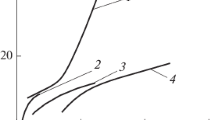Abstract
There are three sub-processes associated with the assembly of an automobile transmission: heat fitting, shrink fitting, and combination fitting. In the heat fitting stage, the gear is heated to a specified temperature and then squeezed towards the outer diameter of the shaft. The stress of the heat-fitted gear depends on the yield strength of the gear. In the shrink fitting process, the gear is typically squeezed towards the shaft at room temperature using a press. An alternate method, known as warm shrink fitting, heats the already warm gear and safely squeezes it toward the shaft. The warm shrink fitting process for automobile transmission parts is becoming more commonplace, but the additional heating can cause the dimensions of the assembled parts (shaft/gear) to change with respect to both the outer diameter and the profile of the gear. As a result, there may be additional noise and vibration between gears. To address these problems, we analyzed the warm shrink fitting process using the contact pressure caused by fitting interference between the outer diameter of the shaft and the inner diameter of the gear, fitting temperature, and the profile tolerance of the gear as design parameters. In this study, a closed form equation for predicting the contact pressure and fitting load is proposed. This equation is used to develop an optimization technique for the warm shrink fitting process. The reliability of the model was verified using experimental results measured in the field, and FEM with thermal-structural coupled field analysis. Actual loads measured in the field showed good agreement with the results obtained by theoretical and finite element analysis, and expansion of the outer diameters of the gears agreed well with the results.
Similar content being viewed by others
Abbreviations
- r 1 :
-
inner radius of shaft
- r 2 :
-
outer radius of shaft or inner radius of gear
- r 3 :
-
outer radius of gear
- k :
-
radial coefficient, r 3/r 2
- E :
-
Young’s modulus
- F SF :
-
shrink fitting force
- p :
-
contact pressure due to shrink fitting
- p i , p o :
-
inner and outer pressure
- P A , P B :
-
contact force occurred on the Section A/B
- P T :
-
total contact force, P A +P B
- α :
-
heat transfer coefficient
- ΔT :
-
difference between heating and room temperature
- δ SF :
-
the calculated amount of fitting interference
- δ I :
-
the amount of interference used in the field
- Δ H :
-
displacement by heating
- μ :
-
friction coefficient
- υ :
-
Poisson’s ratio
References
Besterfield, G., Kaw, A., Nichani, S., Ratnam, B., Cherukara, T. A. and Denninger, M. (2003). Assembly procedures of trunnion-hub-girder for bascule bridges. Theoretical and Applied Fracture Mechanics 40,2, 123–134.
Chen, X., Balendra, R. and Qin, Y. (2004). A new approach for the optimization of the shrink-fitting of cold-forging dies. Int. J. Materials Processing Technology 145,2, 215–223.
Kim, H. Y., Kim, C. and Bae, W. B. (2006). Development of an optimization technique of a warm shrink fitting process for an automotive transmission parts. Int. J. Automotive Technology 7,7, 847–852.
Ko, W. S., Lee, H. W. and Park, N. G. (2006). Developmemnt of a vibration model of a helical gear pair for vehicle transmission. Int. J. Automotive Technology 7,4, 477–483.
Kurt, L. (1985). Handbook of Metal Forming. McGraw-Hill Book Company. New York.
Laue, K. and Stenger, H. (1981). Extrusion. American Society for Metals. Ohio.
Moon, S. E., Kim, H. S. and Hwang, S. H. (2005). Development of automatic clutch actuator for automated manual transmission. Int. J. Automotive Technology 6,5, 467–473.
Rao, S. S. and Tjandra, M. (1994). Reliability-based design of automotive transmission systems. Reliability Engineering & System Safety 46,2, 159–169.
Sen, S. and Aksakal, B. (2004). Stress analysis of interference fitted shaft-hub system under transient heat transfer conditions. Materials & Design 25,5, 407–417.
Sung, D. H. and Kim, H. S. (2002). A study on 3 shaft hydromechanical transmission design considering power and speed characteristics. J. Korean Society of Mechanical Engineering 26,12, 2615–2623.
Ugural, A. C. and Fenster, S. K. (1981). Advanced Strength and Applied Elasticity. Elsevier North Holland, Inc. New Work.
Zhang, Y., McClain, B. and Fang, X. D. (2000). Design of interference fits via finite element method. Int. J. Mechanical Sciences 42,9, 1835–1850.
Author information
Authors and Affiliations
Corresponding author
Rights and permissions
About this article
Cite this article
Kim, T.J., Kim, H.Y., Hwang, B.C. et al. Improved method for analyzing automotive transmission parts (shaft/gear) manufactured using the warm shrink fitting process. Int.J Automot. Technol. 10, 611–618 (2009). https://doi.org/10.1007/s12239-009-0072-7
Received:
Revised:
Published:
Issue Date:
DOI: https://doi.org/10.1007/s12239-009-0072-7




